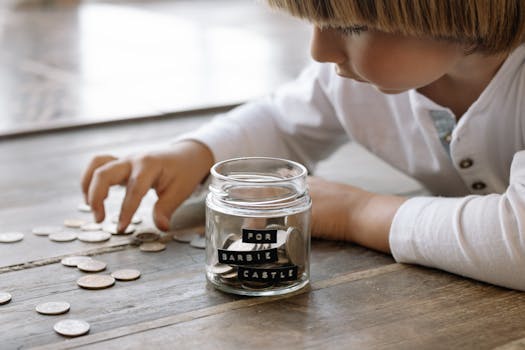Saving Strategies
Unexpected Ways Minimalism and Saving Money Transform Your Everyday Life
Minimalism and saving money go further than you think. Streamline your routines, remove hidden expenses, and gain more time—find out how small changes mean big savings in everyday life.
Advertisement
Staring at a cluttered closet or kitchen, it’s easy to wonder if less really is more. These small decisions add up, especially when you consider minimalism and saving money go hand in hand in ways you might not expect.
Giving thought to each purchase doesn’t just keep your shelves tidy. This mindset impacts your finances by revealing hidden costs in forgotten corners—subscriptions, duplicate gadgets, or unused decor all count.
Embracing a minimalist approach isn’t about deprivation; it’s about clarity. Let’s dig into how specific minimalist shifts can help you spend less, feel lighter, and reshape your approach to money.
Reducing Decision Fatigue Lowers Overspending Instincts
Streamlining daily choices decreases decision fatigue, making it less likely you’ll splurge impulsively. Simplifying surroundings keeps your mind clear and financial goals in sharp focus.
With less to choose from, routines feel lighter and purchases become deliberate. As stress ebbs, your energy shifts to enjoying what you own instead of hunting for something new.
The Wardrobe Rule: Choose Less, Wear More
Standing before a pared-down closet, you’ll notice less anxiety and more style confidence. Stick to versatile basics instead of crowding drawers with one-off bargains.
Try this: Limit your everyday clothing to a set number—say, 30 favorite pieces. Donate or sell the rest. The sigh of relief you feel translates into real savings.
A minimalist closet means you’re less lured by sales. Each item sees more wear and lasts longer. “Do I love this enough to wear weekly?” is a question that becomes second nature.
The Grocery Game: Ditching Excess Saves Dollars
Paring back your food shopping routine reduces both waste and cost. Make a targeted list based on staple meals and stick to it. Resist adding duplicates or single-use items.
After a few weeks, meal planning becomes automatic. You see fewer impulse snacks and less spoiled produce. When “Eat what you buy, buy what you eat” becomes your rhythm, savings multiply.
Minimalism and saving money extend from pantry to wallet: clarity in shopping decisions leads to fewer wasted ingredients and more money left for future priorities.
| Area | Traditional Approach | Minimalist Approach | Takeaway for Savings |
|---|---|---|---|
| Wardrobe | Buy trendy, seasonal items | Invest in classic essentials | Repeat wear saves on future shopping |
| Grocery | Weekly stock-up on variety | Staple-focused targeted lists | Less waste, fewer trips |
| Tech Gadgets | Upgrade annually | Maintain, delay new purchases | Stretch use, defer big expenses |
| Home Decor | Seasonal refreshes | Timeless, multipurpose pieces | Buy once, enjoy longer |
| Subscriptions | Keep multiple streaming apps | Select one or two you love | Reduce monthly outflow |
Fewer Subscriptions Means More Money for What Matters
Cutting hidden recurring costs is a direct benefit of minimalism and saving money. Fewer subscriptions translate to tangible monthly gains—dollars you hold onto and can redirect.
Audit every auto-renewing expense. Pause and ask: “Am I truly using this, or is it digital clutter?” This one change creates instant breathing room in your budget.
Trim Unused Streaming and Print Media
Open your phone or credit card statement and highlight every entertainment expense. Many people realize they’re paying for three or more unused streaming services, old music apps, and the Sunday paper they skip each week.
Cancel all but your top one or two options. See if you even notice the difference a month later. Stack that savings—$20, $30, or more a month—towards a personal goal, like a trip or emergency fund.
- Audit streaming and magazine lines on your statements, then highlight unused ones in red.
- Set calendar reminders to recheck for new subscriptions every quarter, ensuring nothing goes unnoticed.
- Limit new signups to one trial period at a time, keeping your focus—and inbox—uncluttered.
- Negotiate with bundled services for loyalty discounts and lower rates when possible.
- Share subscriptions with family members where policy allows, meaning everyone pays less overall.
After six months, track your recurring expenses again. Use the total saved to bump up emergency savings or clear a small debt.
Cut Unused Apps and Digital Tools
Scroll through your app library and ask yourself, “When was the last time I used this tool?” Uninstall trial apps and cancel premium plans you forgot about.
Delete apps that duplicate tasks, such as having three different to-do lists. Simplifying digital life reduces temptation to splurge on upgrades or add-ons.
- Review installed apps monthly and remove those unused for 60 days—digital clutter leads to repeated micro-spending.
- Use free built-in phone tools for notes and reminders, reducing need for external subscriptions.
- Consolidate overlapping software accounts; one robust tool saves more than three fragmented ones.
- Turn off auto-renew for trial services right after signing up. This prevents surprise bills months later.
- Message friends for their favorite free alternatives before paying for yet another app.
End each quarter by celebrating reduced monthly bills—an immediate win for both minimalism and saving money.
Pared-Back Living Spaces Save on Maintenance and Upkeep
A simple home reduces cleaning supply costs, repair bills, and renovation temptations. Minimalism and saving money feed off each other: fewer belongings mean less time and cash spent keeping them up.
A tidy space becomes easier to care for, freeing up your weekends and your wallet. Cleaner living doesn’t just feel better—it’s measurably less expensive.
Household Cleaning: Target Only the Essentials
A single multi-purpose spray can replace several niche cleaning products. With fewer knickknacks, dusting and vacuuming become quick jobs rather than time-consuming chores.
When you see all your cleaning tools in one bin, it’s obvious what’s needed and what was impulse. Streamline your cleaning process and buy refills before replacing full bottles.
This not only cuts clutter but helps you notice what you actually use, making household shopping trips more focused and less frequent.
Home Repairs Become Less Frequent and Cheaper
Rooms with fewer bookshelves, lamps, and gadgets require less ongoing upkeep. Each item you skip buying is one less thing that might break or need battery replacements next year.
After decluttering, you can spot maintenance issues faster, since nothing hides a drip or crack. This leads to early fixes, smaller problems, and less expensive emergencies.
Try evaluating every potential purchase with, “Am I willing to fix or maintain this myself?” If not, reconsider adding it to your space.
Intentional Shopping Delivers Lasting Value per Dollar
Minimalism and saving money drive smarter purchasing habits. Each time you pause for a heartbeat before buying, you’re building a lasting shield against buyer’s remorse and wasteful spending habits.
Practicing mindful shopping, where every item must earn its keep, naturally guides you to invest in quality over quantity. The improvements are immediate and lasting.
The Invest-in-Best Rule
Minimalists learn the “invest in best” rule: pick products that withstand daily use and choose warranties over flashy features. This mindset changes impulse “wants” into a long-term “needs only” filter.
Before checkout, ask, “Will this make life easier for at least a year?” If no, return it. If yes, consider upgrading only when something wears out.
Analogous to kitchen knives, investing in one great chef’s knife outlasts a drawer full of cheap alternatives, with every meal prepared easier and every purchase decision simpler.
Slow Down Before You Tap ‘Buy’
Shopping with intention includes waiting 24 hours before finalizing a purchase. Add the item to your cart, then focus on something else. If you forget it, you never needed it.
This delay tactic, known as the “cooling off” period, lessens regret-filled buys and builds up cash reserves naturally. Practicing patience disrupts the emotional triggers retailers exploit.
Use a phone note to log potential buys, then review weekly. You’ll spot patterns and begin eliminating repeat wants in favor of what truly brings value.
Social Minimalism Reduces Costly Obligations and FOMO Spending
Minimalism applies to social life, reducing pressures to overspend on events, memberships, or “keeping up” purchases. Protecting your time and energy also safeguards your bank account.
Choosing meaningful connections over large circles nudges spending towards experiences that matter, rather than filling your calendar out of obligation.
Saying “No” Confidently to Costly Gatherings
Use scripts like, “Thanks for the invite—I’m prioritizing rest and finances this month.” Direct, polite statements reduce guilt and free up cash instantly.
Trade FOMO for JOMO—the joy of missing out. Fewer obligations reduce ride-share costs, fancy outfits, and bar tabs. Invest in one-on-one time instead of group gatherings driven by expectation.
After three months, compare social spending and note the relief from both wallet drain and social exhaustion. You’ll appreciate each outing more.
Gift-Giving: Meaning Over Material
Minimalists shift to intentional gifting—experiences or handmade cards—rather than defaulting to pricey gift cards or trendy gadgets. Discuss expectations and set seasonal budgets with loved ones.
Send, “I’d love to celebrate with a coffee date instead of a gift exchange this year.” Most friends appreciate the break from shopping stress and enjoy real connection instead.
Tracking gift spending on a shared spreadsheet brings focus to present plans. Watch year-end savings rise as traditions move from stuff to shared moments.
Streamlined Routines Turn Time into Savings
Minimalism saves hours that would otherwise be lost to organizing, shopping, or managing clutter. Each block of free time is another chance to boost income, cut expenses, or rest.
Minimalism and saving money become sustainable when routines feel easy, automated, and repeatable—no motivation needed. This compounding benefit powers long-term financial health.
The 10-Minute Rule for Daily Order
Spend ten minutes each day resetting living spaces. Make beds, put away laundry, clear counters. Consistency prevents buildup, making deep cleans rare and freeing weekends for relaxation.
Automate bill payments to dodge late fees—one less thing to remember, one more way minimalism moves resources to savings without stress.
Every month, find one routine task you can eliminate or automate, then track regained free time. Use that slot for self-care, earning extra, or planning meals to cut takeout.
Maintain Your Minimalism Momentum
Minimalism is an active choice, not a one-time declutter. Set quarterly reminders to review what’s working and course-correct as needed. Add reminders to calendars and consider “before and after” photos for motivation.
Use checklists for spaces, subscriptions, and habits. Something as small as “clear car backseat” or “review kitchen gadgets” reinforces progress and blocks future clutter creep.
Minimalism and saving money work best when habits are visible. Share small wins with accountability partners, sparking positive reinforcement and new inspiration each season.
Embracing Minimalism for More Than Just Money
Adopting minimalism and saving money as twin habits transforms more than your bank balance. Every step is a tangible decision to put value and intention above excess and distraction.
Clearing financial and physical clutter frees you to focus on what you love—family, creativity, health—instead of chasing new possessions. Every dollar and every minute saved is an investment in life’s essentials.
Try one tip today: edit a closet, scrub your subscriptions, or block time for priorities. Minimalism’s small, specific shifts create lasting freedom—let your space and your budget work for you, not the other way around.
Frequently Asked Questions
How does minimalism help me avoid impulse buys?
Decluttering and making mindful shopping lists prevent you from bringing home unnecessary items. Minimalism trains you to pause before buying, cutting down on spontaneous purchases and their associated long-term costs.
What’s the first step to combining minimalism and saving money?
Start by conducting a quick audit: check each area of your home and spending for redundant items or subscriptions. Removing or cutting these gives you an immediate sense of gain, both financially and emotionally.
Does minimalism mean never buying new things again?
No—minimalism is about intention, not denial. You buy what you need or genuinely love, focusing on quality over quantity. This habit ensures that new purchases bring real value and last longer.
Can minimalist living help with debt reduction?
Absolutely—streamlined routines and reduced spending free up cash flow, which you can funnel directly toward debt payments. Each dollar saved is progress made, with less temptation to accumulate new debts.
Is minimalism suitable for families or just individuals?
Minimalism adapts to any household. Family routines and purchasing decisions can be simplified, emphasizing shared priorities. Involving kids or partners in decluttering and value-based choices builds practical financial habits as a team.





